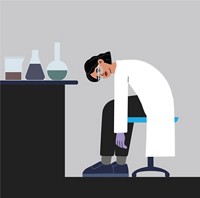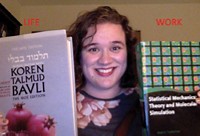Advertisement
Grab your lab coat. Let's get started
Welcome!
Welcome!
Create an account below to get 6 C&EN articles per month, receive newsletters and more - all free.
It seems this is your first time logging in online. Please enter the following information to continue.
As an ACS member you automatically get access to this site. All we need is few more details to create your reading experience.
Not you? Sign in with a different account.
Not you? Sign in with a different account.
ERROR 1
ERROR 1
ERROR 2
ERROR 2
ERROR 2
ERROR 2
ERROR 2
Password and Confirm password must match.
If you have an ACS member number, please enter it here so we can link this account to your membership. (optional)
ERROR 2
ACS values your privacy. By submitting your information, you are gaining access to C&EN and subscribing to our weekly newsletter. We use the information you provide to make your reading experience better, and we will never sell your data to third party members.
Business
Profiles from NOS
Albert Matlack: The Guy With The Questions
by Carmen Drahl
July 11, 2011
| A version of this story appeared in
Volume 89, Issue 28
At every conference, one is in attendance—a chemist who raises his hand with a question at the end of every talk. At this year’s National Organic Chemistry Symposium, that person was University of Delaware adjunct professor Albert S. Matlack. But there’s much more to Matlack than his inquisitive nature.
Before his time in academe, Matlack held a research position at the Hercules Powder Co., where he worked across the hall from 2010 chemistry Nobel Laureate Richard Heck. Matlack survived the round of layoffs that affected Heck (C&EN, July 4, page 30), and he remembers those days well.
“After World War II, it was a boom time for chemists,” Matlack recalled. “People believed you could solve all sorts of problems through chemistry.”
But by the 1970s and ’80s, with the U.S. economy in the doldrums, layoffs seemed to be the solution to financial troubles to companies including Hercules, he told C&EN.
In his later days at Hercules, Matlack’s main project involved polymerization of dicyclopentadiene to make a polymer with the trade name Metton. But eventually, “the company cut off Metton and they didn’t know what to do with me,” he said. He left Hercules in 1994, after securing a teaching gig at Delaware with the help of chemistry professor John L. Burmeister.
“The first course I taught was industrial chemistry,” Matlack said. But soon after, an article in C&EN (Matlack is an avid reader and a 63-year ACS member) convinced him to try something else—to combine his passions for chemistry and environmentalism and develop a course in green chemistry. He’s been teaching that course ever since. By the late 1990s he decided to write a textbook, but had a hard time finding a publisher for a green chemistry text. “Publishers didn’t think the field was going anywhere,” he said. Today his text, “Introduction to Green Chemistry,” is in its second edition.
Even though Matlack has a few other things keeping him busy besides green chemistry—his presidency of the Society of Natural History of Delaware and his two young grandchildren—chemistry education is still very important to him. “Many people get turned off from chemistry in their first year learning about it,” he said. “But there are still many problems for chemists to solve, and chemistry can be fun.”






Join the conversation
Contact the reporter
Submit a Letter to the Editor for publication
Engage with us on Twitter